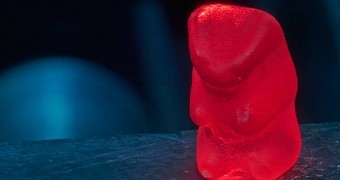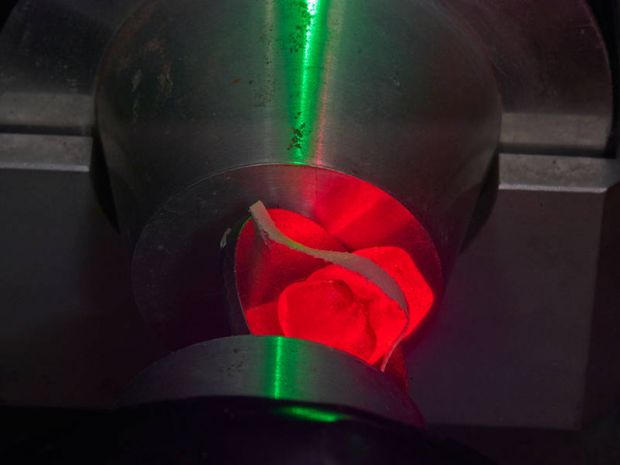All gummy bears sooner or later meet their demise. They have their heads torn off and then get crushed in between somebody's chompers. It's not a pleasant way to go, but there really isn't anything they can do to change their fate.
The thing is that, as it turns out, not all gummy bears meet their doom in some random guy's or gal's stomach. On the contrary, there are some that can take pride in having served some higher purpose before bidding this world its eternal farewell.
For instance, it was not too long ago that a bunch of gummy bears had antiparticles fired at them, all for the sake of science. The experiments were carried out by scientists in Germany and are detailed in a paper in the Journal of Physical Chemistry B.
Bombarding gummy bears with antiparticles
In the report documenting their work, the Technische Universität München researchers behind this series of fairly peculiar experiments explain that, as part of this project, they fired antiparticles known as positrons at a handful of gummy bears.
The scientists go on to detail that positrons are antiparticles corresponding to electrons and that, whenever a positron encounters an electron, they get together to form a brand new particle identified as a positronium.
Unlike their old folks, positroniums don't really like sticking around. On the contrary, the Technische Universität München researchers say that, almost as soon as they form, they self-destruct and produce a flash of light.
When the scientists fired antiparticles at dried gummy bears, the resulting positroniums had an average lifespan of about 1.2 nanoseconds. When birthed inside soaked gummy bears, on the other hand, they managed to survive for about 1.9 nanoseconds.
Not a complete waste of time and money
Contrary to what some might assume, these experiments were not carried out because the Technische Universität München researchers were bored out of their mind and needed something to pass the time until their next paycheck.
The brainiacs explain that, by determining the lifespan of positroniums in dry and soaked gummy bears, they were able to make observations concerning the size and the number of pores in the gelatinous treats that they toyed with.
Admittedly, knowing how many pores one gummy bear or another packs is of little to no importance. Then again, the scientists say that, thanks to their experiments, drug developers are bound to have an easier time zooming in on the anatomy of gelatin preparations.
The pharmaceutical industry relies on gelatin to encapsulate active agents and better control their release in the body. Thus, the active compounds in one drug or another are released at a different pace depending on the number of pores in the gelatin around them.
The Technische Universität München specialists say that, for some time now, drug makers have been struggling to accurately determine the makeup of the gelatin coating of various compounds and, consequently, to accurately predict how the gelatin will behave inside the body.
Now that it's been proven that antiparticles can be used to pin down the number and size of pores of gelatinous materials, the researchers expect that this will pave the way for the development of better and more efficient drugs.
“Using positrons as highly mobile probes, the volume of the nanopores can be determined, especially also in unordered systems like netted gelatins,” explains scientist Christoph Hugenschmidt. “The larger the free volume, the easier it is for oxygen to penetrate it and harm the medication, but also the less brittle the gelatin,” he adds.

 14 DAY TRIAL //
14 DAY TRIAL // 

